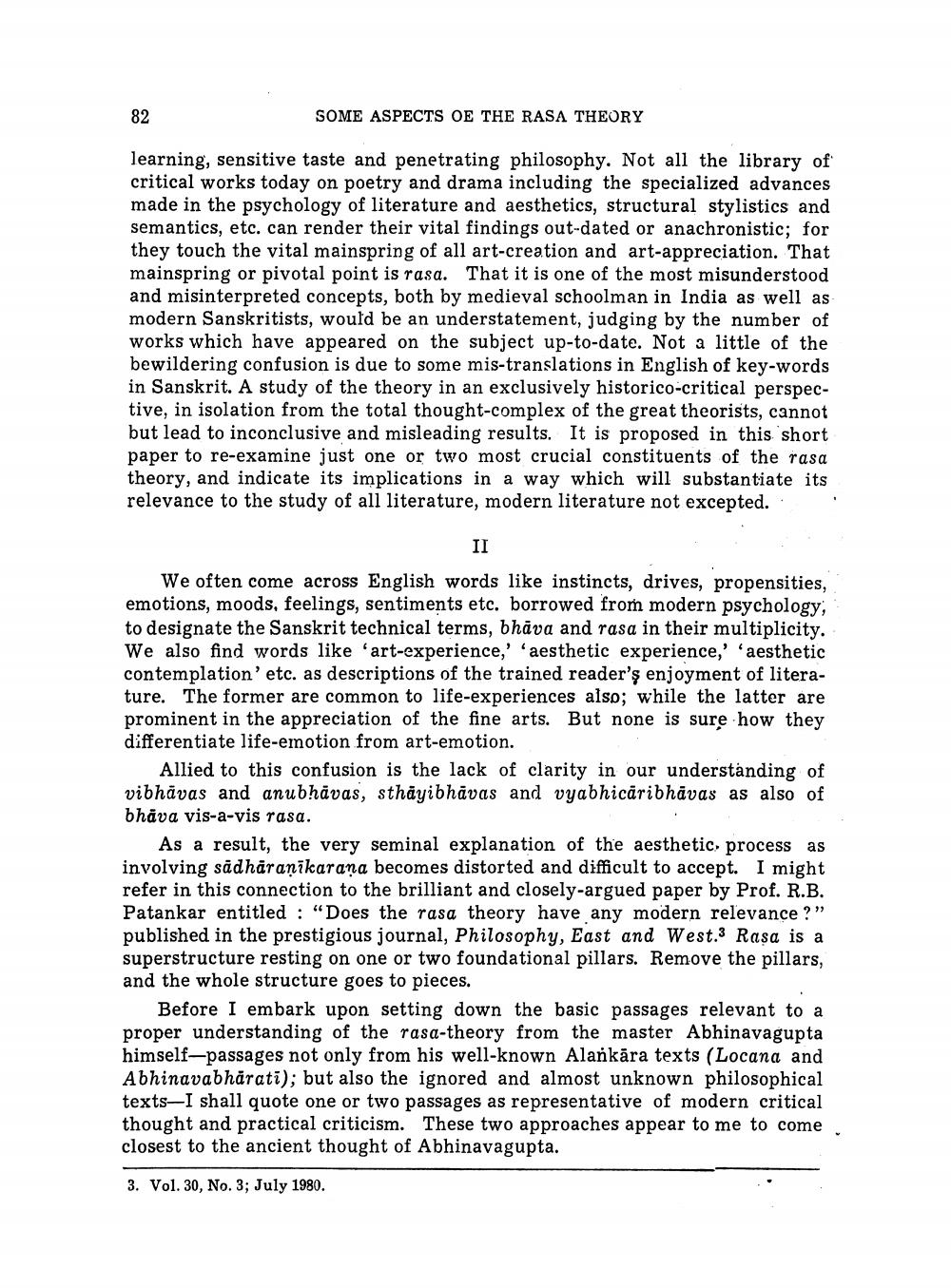________________
82
SOME ASPECTS OE THE RASA THEORY
learning, sensitive taste and penetrating philosophy. Not all the library of critical works today on poetry and drama including the specialized advances made in the psychology of literature and aesthetics, structural stylistics and semantics, etc. can render their vital findings out-dated or anachronistic; for they touch the vital mainspring of all art-creation and art-appreciation. That mainspring or pivotal point is rasa. That it is one of the most misunderstood and misinterpreted concepts, both by medieval schoolman in India as well as modern Sanskritists, would be an understatement, judging by the number of works which have appeared on the subject up-to-date. Not a little of the bewildering confusion is due to some mis-translations in English of key-words in Sanskrit. A study of the theory in an exclusively historico-critical perspective, in isolation from the total thought-complex of the great theorists, cannot but lead to inconclusive and misleading results. It is proposed in this short paper to re-examine just one or two most crucial constituents of the rasa theory, and indicate its implications in a way which will substantiate its relevance to the study of all literature, modern literature not excepted.. .
Il
We often come across English words like instincts, drives, propensities, emotions, moods, feelings, sentiments etc. borrowed from modern psychology, to designate the Sanskrit technical terms, bhāva and rasa in their multiplicity. We also find words like 'art-experience,' 'aesthetic experience,' aesthetic contemplation' etc. as descriptions of the trained reader's enjoyment of literature. The former are common to life-experiences also; while the latter are prominent in the appreciation of the fine arts. But none is sure how they differentiate life-emotion from art-emotion.
Allied to this confusion is the lack of clarity in our understanding of vibhāvas and anubhāvas, sthayibhāvas and vyabhicaribhāvas as also of bhāva vis-a-vis rasa.
As a result, the very seminal explanation of the aesthetic, process as involving sadharanikarana becomes distorted and difficult to accept. I might refer in this connection to the brilliant and closely-argued paper by Prof. R.B. Patankar entitled : "Does the rasa theory have any modern relevance ?" published in the prestigious journal, Philosophy, East and West.3 Rasa is a superstructure resting on one or two foundational pillars. Remove the pillars, and the whole structure goes to pieces.
Before I embark upon setting down the basic passages relevant to a proper understanding of the rasa-theory from the master Abhinavagupta himself-passages not only from his well-known Alankāra texts (Locana and Abhinavabhārati); but also the ignored and almost unknown philosophical texts-I shall quote one or two passages as representative of modern critical thought and practical criticism. These two approaches appear to me to come closest to the ancient thought of Abhinavagupta.
3. Vol. 30, No. 3; July 1980.




